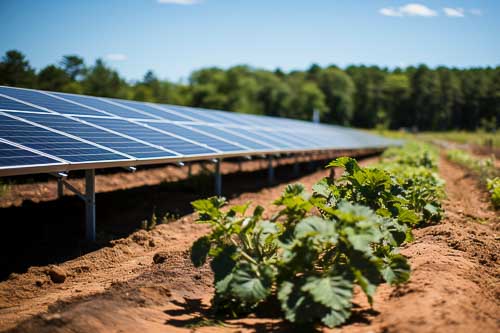Solar Albury Wodonga
Solar Professionals, CJ Power Solutions
 Australia's vast and diverse landscape presents unique challenges for rural property owners seeking to harness the sun's power.
Australia's vast and diverse landscape presents unique challenges for rural property owners seeking to harness the sun's power.
With varying energy needs, geographical constraints, and various property configurations, rural solar solutions require a customised approach to ensure optimal efficiency and cost-effectiveness.
The importance of tailored solar solutions for rural properties in New South Wales and Victoria is significant, highlighting the key considerations and benefits of customised designs.
Unique Energy Needs of Rural Properties
Rural properties often have unique energy demands that differ significantly from urban dwellings. Agricultural operations, livestock management, and off-grid living usually require higher energy consumption patterns, necessitating a tailored approach to sizing solar system design. A comprehensive assessment of energy requirements, considering factors such as property size, appliance usage, and potential future energy needs, is crucial for designing a solar system that meets the specific needs of each rural property.
Geographical Considerations and Property Configurations
Rural properties' geographical location and physical layout can significantly impact the design and installation of solar systems. Shading from trees or surrounding structures, variations in roof orientation and surface area, and the presence of obstacles or uneven terrain can all influence the placement and configuration of solar panels. Customised design considerations, such as strategic panel placement, optimised tilt angles, and microinverters, can help overcome these challenges and maximise solar energy capture.
Energy Storage Solutions for Enhanced Reliability
Rural properties often face challenges with grid reliability and stability. Power outages, voltage fluctuations, and limited grid capacity can disrupt energy supply and pose challenges for critical applications. Energy storage solutions, such as batteries, can be integrated into solar systems to provide backup power during grid outages, enhance energy independence, and optimise energy management. Customised design considerations, such as battery sizing and integration strategies, can ensure that energy storage solutions seamlessly complement the solar system and meet the specific needs of each rural property.
Maximising Efficiency through Smart Energy Management Systems
Smart energy management systems (SEMS) can play a vital role in optimising the performance of rural solar systems. SEMS can help property owners maximise energy production, reduce consumption, and manage energy costs by providing real-time monitoring, data analytics, and automated control capabilities. Customised design considerations, such as integrating SEMS with existing appliances and control systems, can ensure tailored systems for each rural property's unique energy management needs.
Technological Advancements for Enhanced Efficiency
Technological advancements in solar panel technology, battery storage solutions, and intelligent energy management systems are continually improving the efficiency and cost-effectiveness of rural solar solutions. Customised design considerations can incorporate the latest technological innovations, such as high-efficiency solar panels, advanced battery chemistries, and intelligent energy management software, to optimise performance and maximise the benefits of solar energy for rural properties.
Tailored solar solutions are essential to harness the sun's power effectively for rural properties in New South Wales and Victoria. By understanding the unique energy needs of rural properties, addressing geographical considerations and property configurations, incorporating energy storage solutions, maximising efficiency through intelligent energy management systems, and embracing technological advancements, customised design can ensure that rural solar systems meet the specific requirements and challenges of each property, leading to increased energy independence, reduced costs, and enhanced sustainability.